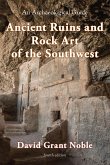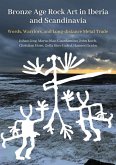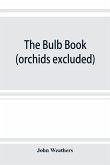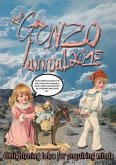Global Perspectives for the Conservation and Management of Open-Air Rock Art Sites
Herausgeber: Fernandes, Antonio; Marshall, Melissa; Domingo, Ines
Global Perspectives for the Conservation and Management of Open-Air Rock Art Sites
Herausgeber: Fernandes, Antonio; Marshall, Melissa; Domingo, Ines
- Broschiertes Buch
- Merkliste
- Auf die Merkliste
- Bewerten Bewerten
- Teilen
- Produkt teilen
- Produkterinnerung
- Produkterinnerung
Global Perspectives for the Conservation and Management of Open-Air Rock Art Sites responds to the growth in know rock art sites across the globe and addresses the need to investigate natural and human-originated threats to them as well as propose solutions to mitigate resulting deterioration.
Andere Kunden interessierten sich auch für
![Ancient Ruins and Rock Art of the Southwest Ancient Ruins and Rock Art of the Southwest]() David Grant NobleAncient Ruins and Rock Art of the Southwest22,99 €
David Grant NobleAncient Ruins and Rock Art of the Southwest22,99 €![Bronze Age Rock Art in Iberia and Scandinavia Bronze Age Rock Art in Iberia and Scandinavia]() Johan LingBronze Age Rock Art in Iberia and Scandinavia60,99 €
Johan LingBronze Age Rock Art in Iberia and Scandinavia60,99 €![B-17 Flying Fortress Units of the Eighth Air Force (Part 2) B-17 Flying Fortress Units of the Eighth Air Force (Part 2)]() Martin BowmanB-17 Flying Fortress Units of the Eighth Air Force (Part 2)22,99 €
Martin BowmanB-17 Flying Fortress Units of the Eighth Air Force (Part 2)22,99 €![New Perspectives on the End of the Cold War New Perspectives on the End of the Cold War]() New Perspectives on the End of the Cold War65,99 €
New Perspectives on the End of the Cold War65,99 €![The bulb book; or, Bulbous and tuberous plants for the open air, stove, and greenhouse, containing particulars as to descriptions, culture, propagation, etc., of plants from all parts of the world having bulbs, corms, tubers, or rhizomes (orchids excluded The bulb book; or, Bulbous and tuberous plants for the open air, stove, and greenhouse, containing particulars as to descriptions, culture, propagation, etc., of plants from all parts of the world having bulbs, corms, tubers, or rhizomes (orchids excluded]() John WeathersThe bulb book; or, Bulbous and tuberous plants for the open air, stove, and greenhouse, containing particulars as to descriptions, culture, propagation, etc., of plants from all parts of the world having bulbs, corms, tubers, or rhizomes (orchids excluded32,99 €
John WeathersThe bulb book; or, Bulbous and tuberous plants for the open air, stove, and greenhouse, containing particulars as to descriptions, culture, propagation, etc., of plants from all parts of the world having bulbs, corms, tubers, or rhizomes (orchids excluded32,99 €![Short of General War: Perspectives on the Use of Military Power in the 21st Century Short of General War: Perspectives on the Use of Military Power in the 21st Century]() Short of General War: Perspectives on the Use of Military Power in the 21st Century27,99 €
Short of General War: Perspectives on the Use of Military Power in the 21st Century27,99 €![The Gonzo Annual 2015 The Gonzo Annual 2015]() The Gonzo Annual 201517,99 €
The Gonzo Annual 201517,99 €-
-
-
Global Perspectives for the Conservation and Management of Open-Air Rock Art Sites responds to the growth in know rock art sites across the globe and addresses the need to investigate natural and human-originated threats to them as well as propose solutions to mitigate resulting deterioration.
Hinweis: Dieser Artikel kann nur an eine deutsche Lieferadresse ausgeliefert werden.
Hinweis: Dieser Artikel kann nur an eine deutsche Lieferadresse ausgeliefert werden.
Produktdetails
- Produktdetails
- Verlag: Taylor & Francis Ltd
- Seitenzahl: 382
- Erscheinungstermin: 29. Januar 2024
- Englisch
- Abmessung: 234mm x 156mm
- Gewicht: 453g
- ISBN-13: 9781032310039
- ISBN-10: 1032310030
- Artikelnr.: 69938554
- Herstellerkennzeichnung
- Libri GmbH
- Europaallee 1
- 36244 Bad Hersfeld
- 06621 890
- Verlag: Taylor & Francis Ltd
- Seitenzahl: 382
- Erscheinungstermin: 29. Januar 2024
- Englisch
- Abmessung: 234mm x 156mm
- Gewicht: 453g
- ISBN-13: 9781032310039
- ISBN-10: 1032310030
- Artikelnr.: 69938554
- Herstellerkennzeichnung
- Libri GmbH
- Europaallee 1
- 36244 Bad Hersfeld
- 06621 890
António Batarda Fernandes is an archaeologist currently heading the Division for Inventory, Study, and Safeguard of Archaeological Heritage of the Directorate-General for Cultural Heritage, an institution under the Ministry of Culture of the Portuguese Government. Melissa Marshall is an archaeologist, GIS technician and Early Career Research Fellow based at the Nulungu Research Institute, the University of Notre Dame, Australia. Inés Domingo is an ICREA Research Professor at the University of Barcelona and Vice-president of the World Archaeological Congress.
Introduction: Global Perspectives for the Conservation and Management of
Open-Air Rock Art Sites SECTION I - Ethics, Community and Collaborative
Approaches to the Conservation and Management of Open-Air Rock Art Sites
1. Ethical and Political Matters in Open-Air Rock Art Conservation Practice
2. Murujuga: Managing an Archaeological and Sacred Landscape through
Industry 3. Multidisciplinary and Integral Approaches to Rock Art as a
Strategy for Rock Art Conservation: La Covatina Site as a Case Study 4.
Monitoring and Maintenance of Open-Air Rock Art Sites: Collaborating with
Community in Northern Australia SECTION II- Methodological Tools to Support
Assessment and Monitoring of Open-Air Rock Art Sites 5. The Rock Art
Stability Index: A Non-Invasive Rapid Field Assessment for Condition
Evaluation 6. Confusion and Solution: Providing a Desk-Based Approach for
the Management of Rock Art 7. Rock Art Monitoring in the UK and Ireland:
The CARE Toolkit - Going Online and Using Mobile Data 8. Rock Art and
Geographical Information Technologies: SIPAAR and the Integral Management
of Petroglyphs in Galicia SECTION III - Scientific Examination and
Interventions at Open-Air Rock Art Sites 9. Laser Cleaning vs. Chemical
Cleaning for Removal of Lichen from Schist Surfaces in the Coa Valley
(Portugal) and Siega Verde (Spain) Archaeological Sites 10. In-Situ Rock
Art Preservation in the Sabor Valley (Northwest Iberia) 11. Evaluating
Thermal-Hygrometric Dynamics at a Levantine Rock Art Site: La Covatina
(Vilafranca, Castellò) 12. Calcium Hydroxide Nanoparticles Testing for the
Consolidation of Prehistoric Paintings in Cova Remígia (Castelló, Spain)
13. Multi-Proxy Archaeometric Analyses on Rock Art pigments in Different
World Contexts SECTION IV - Global Community and Collaborative Case Studies
Innovating Methodologies for the Ongoing Monitoring and Management of
Open-Air Rock Art Sites 14. Rock Art in the Cerrado: Cultural and Natural
Heritage Conservation Come Together at Serranopólis, Goiás, Brazil 15.
Community Engagement in Geologic Assessments of Thamudic Inscriptions and
Petroglyphs in the Wadi Rum Protected Area, Jordan 16. Preservation of
Endangered Bangudae Petroglyphs in Korea 17. Rock Art Conservation in the
Serra Branca Valley, Serra da Capivara National Park, Piauí, Brazil 18.
Trials and Tribulations of Artificial Silicone Driplines: a Case Study from
Kakadu National Park, Australia Index
Open-Air Rock Art Sites SECTION I - Ethics, Community and Collaborative
Approaches to the Conservation and Management of Open-Air Rock Art Sites
1. Ethical and Political Matters in Open-Air Rock Art Conservation Practice
2. Murujuga: Managing an Archaeological and Sacred Landscape through
Industry 3. Multidisciplinary and Integral Approaches to Rock Art as a
Strategy for Rock Art Conservation: La Covatina Site as a Case Study 4.
Monitoring and Maintenance of Open-Air Rock Art Sites: Collaborating with
Community in Northern Australia SECTION II- Methodological Tools to Support
Assessment and Monitoring of Open-Air Rock Art Sites 5. The Rock Art
Stability Index: A Non-Invasive Rapid Field Assessment for Condition
Evaluation 6. Confusion and Solution: Providing a Desk-Based Approach for
the Management of Rock Art 7. Rock Art Monitoring in the UK and Ireland:
The CARE Toolkit - Going Online and Using Mobile Data 8. Rock Art and
Geographical Information Technologies: SIPAAR and the Integral Management
of Petroglyphs in Galicia SECTION III - Scientific Examination and
Interventions at Open-Air Rock Art Sites 9. Laser Cleaning vs. Chemical
Cleaning for Removal of Lichen from Schist Surfaces in the Coa Valley
(Portugal) and Siega Verde (Spain) Archaeological Sites 10. In-Situ Rock
Art Preservation in the Sabor Valley (Northwest Iberia) 11. Evaluating
Thermal-Hygrometric Dynamics at a Levantine Rock Art Site: La Covatina
(Vilafranca, Castellò) 12. Calcium Hydroxide Nanoparticles Testing for the
Consolidation of Prehistoric Paintings in Cova Remígia (Castelló, Spain)
13. Multi-Proxy Archaeometric Analyses on Rock Art pigments in Different
World Contexts SECTION IV - Global Community and Collaborative Case Studies
Innovating Methodologies for the Ongoing Monitoring and Management of
Open-Air Rock Art Sites 14. Rock Art in the Cerrado: Cultural and Natural
Heritage Conservation Come Together at Serranopólis, Goiás, Brazil 15.
Community Engagement in Geologic Assessments of Thamudic Inscriptions and
Petroglyphs in the Wadi Rum Protected Area, Jordan 16. Preservation of
Endangered Bangudae Petroglyphs in Korea 17. Rock Art Conservation in the
Serra Branca Valley, Serra da Capivara National Park, Piauí, Brazil 18.
Trials and Tribulations of Artificial Silicone Driplines: a Case Study from
Kakadu National Park, Australia Index
Introduction: Global Perspectives for the Conservation and Management of
Open-Air Rock Art Sites SECTION I - Ethics, Community and Collaborative
Approaches to the Conservation and Management of Open-Air Rock Art Sites
1. Ethical and Political Matters in Open-Air Rock Art Conservation Practice
2. Murujuga: Managing an Archaeological and Sacred Landscape through
Industry 3. Multidisciplinary and Integral Approaches to Rock Art as a
Strategy for Rock Art Conservation: La Covatina Site as a Case Study 4.
Monitoring and Maintenance of Open-Air Rock Art Sites: Collaborating with
Community in Northern Australia SECTION II- Methodological Tools to Support
Assessment and Monitoring of Open-Air Rock Art Sites 5. The Rock Art
Stability Index: A Non-Invasive Rapid Field Assessment for Condition
Evaluation 6. Confusion and Solution: Providing a Desk-Based Approach for
the Management of Rock Art 7. Rock Art Monitoring in the UK and Ireland:
The CARE Toolkit - Going Online and Using Mobile Data 8. Rock Art and
Geographical Information Technologies: SIPAAR and the Integral Management
of Petroglyphs in Galicia SECTION III - Scientific Examination and
Interventions at Open-Air Rock Art Sites 9. Laser Cleaning vs. Chemical
Cleaning for Removal of Lichen from Schist Surfaces in the Coa Valley
(Portugal) and Siega Verde (Spain) Archaeological Sites 10. In-Situ Rock
Art Preservation in the Sabor Valley (Northwest Iberia) 11. Evaluating
Thermal-Hygrometric Dynamics at a Levantine Rock Art Site: La Covatina
(Vilafranca, Castellò) 12. Calcium Hydroxide Nanoparticles Testing for the
Consolidation of Prehistoric Paintings in Cova Remígia (Castelló, Spain)
13. Multi-Proxy Archaeometric Analyses on Rock Art pigments in Different
World Contexts SECTION IV - Global Community and Collaborative Case Studies
Innovating Methodologies for the Ongoing Monitoring and Management of
Open-Air Rock Art Sites 14. Rock Art in the Cerrado: Cultural and Natural
Heritage Conservation Come Together at Serranopólis, Goiás, Brazil 15.
Community Engagement in Geologic Assessments of Thamudic Inscriptions and
Petroglyphs in the Wadi Rum Protected Area, Jordan 16. Preservation of
Endangered Bangudae Petroglyphs in Korea 17. Rock Art Conservation in the
Serra Branca Valley, Serra da Capivara National Park, Piauí, Brazil 18.
Trials and Tribulations of Artificial Silicone Driplines: a Case Study from
Kakadu National Park, Australia Index
Open-Air Rock Art Sites SECTION I - Ethics, Community and Collaborative
Approaches to the Conservation and Management of Open-Air Rock Art Sites
1. Ethical and Political Matters in Open-Air Rock Art Conservation Practice
2. Murujuga: Managing an Archaeological and Sacred Landscape through
Industry 3. Multidisciplinary and Integral Approaches to Rock Art as a
Strategy for Rock Art Conservation: La Covatina Site as a Case Study 4.
Monitoring and Maintenance of Open-Air Rock Art Sites: Collaborating with
Community in Northern Australia SECTION II- Methodological Tools to Support
Assessment and Monitoring of Open-Air Rock Art Sites 5. The Rock Art
Stability Index: A Non-Invasive Rapid Field Assessment for Condition
Evaluation 6. Confusion and Solution: Providing a Desk-Based Approach for
the Management of Rock Art 7. Rock Art Monitoring in the UK and Ireland:
The CARE Toolkit - Going Online and Using Mobile Data 8. Rock Art and
Geographical Information Technologies: SIPAAR and the Integral Management
of Petroglyphs in Galicia SECTION III - Scientific Examination and
Interventions at Open-Air Rock Art Sites 9. Laser Cleaning vs. Chemical
Cleaning for Removal of Lichen from Schist Surfaces in the Coa Valley
(Portugal) and Siega Verde (Spain) Archaeological Sites 10. In-Situ Rock
Art Preservation in the Sabor Valley (Northwest Iberia) 11. Evaluating
Thermal-Hygrometric Dynamics at a Levantine Rock Art Site: La Covatina
(Vilafranca, Castellò) 12. Calcium Hydroxide Nanoparticles Testing for the
Consolidation of Prehistoric Paintings in Cova Remígia (Castelló, Spain)
13. Multi-Proxy Archaeometric Analyses on Rock Art pigments in Different
World Contexts SECTION IV - Global Community and Collaborative Case Studies
Innovating Methodologies for the Ongoing Monitoring and Management of
Open-Air Rock Art Sites 14. Rock Art in the Cerrado: Cultural and Natural
Heritage Conservation Come Together at Serranopólis, Goiás, Brazil 15.
Community Engagement in Geologic Assessments of Thamudic Inscriptions and
Petroglyphs in the Wadi Rum Protected Area, Jordan 16. Preservation of
Endangered Bangudae Petroglyphs in Korea 17. Rock Art Conservation in the
Serra Branca Valley, Serra da Capivara National Park, Piauí, Brazil 18.
Trials and Tribulations of Artificial Silicone Driplines: a Case Study from
Kakadu National Park, Australia Index








